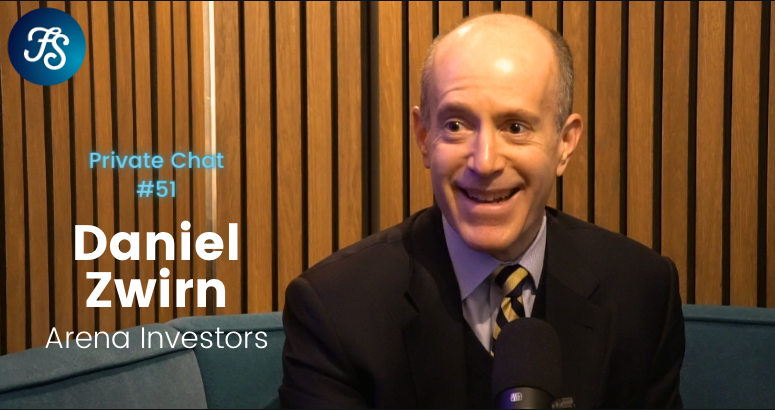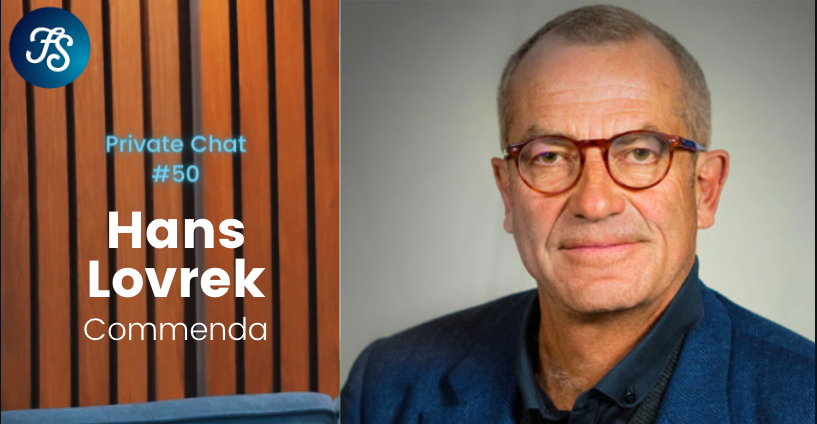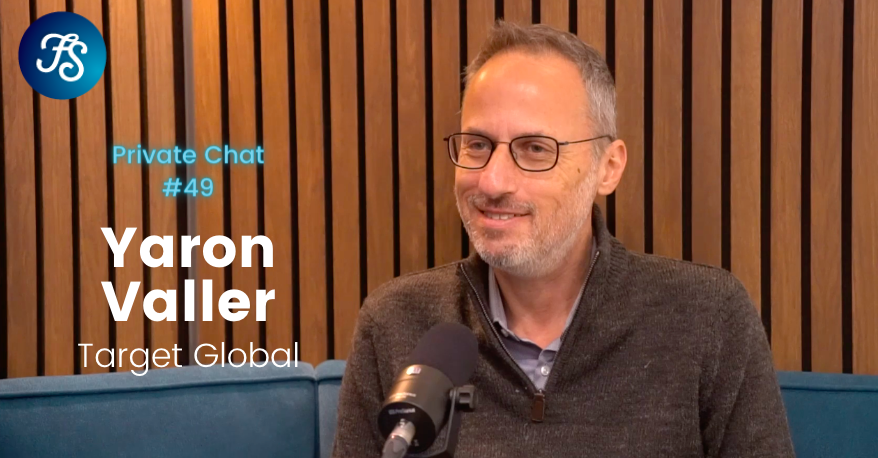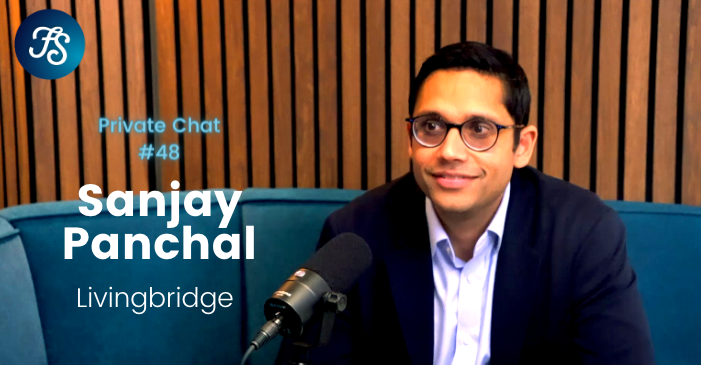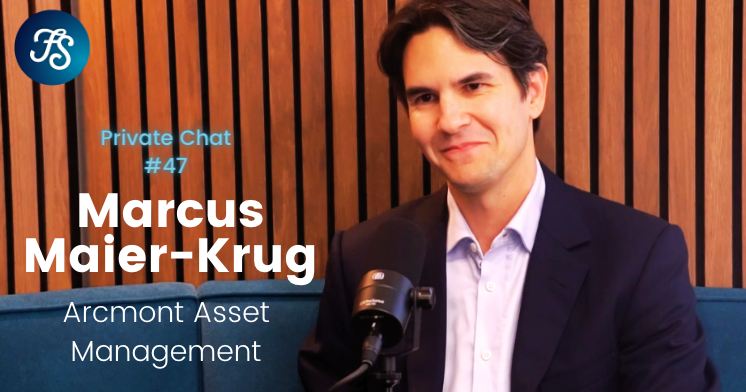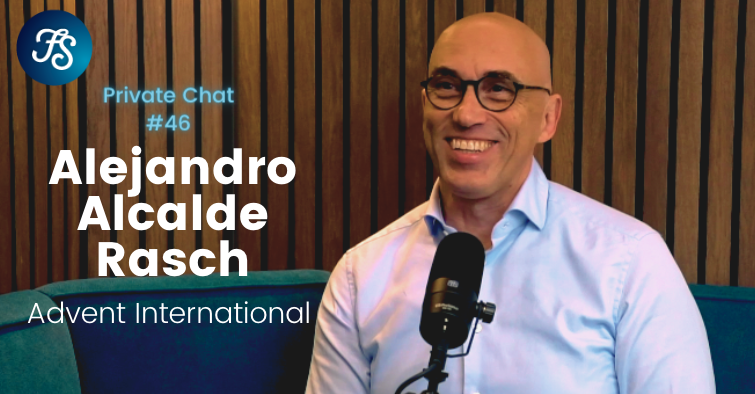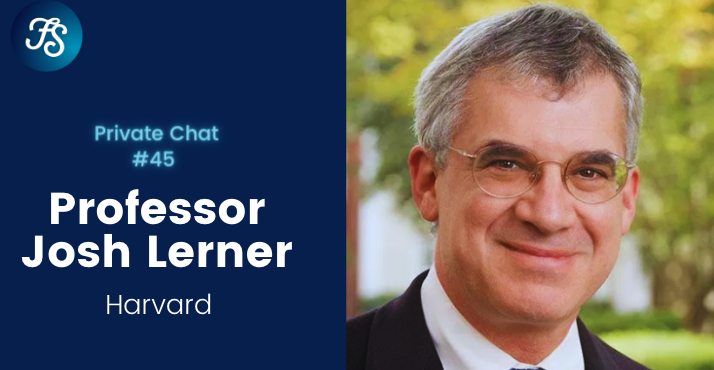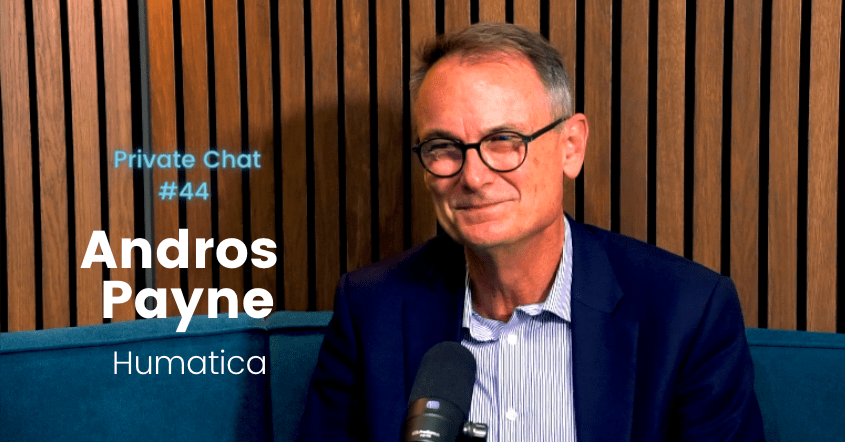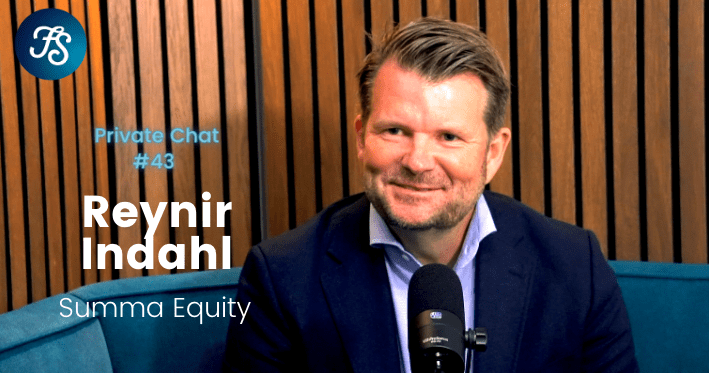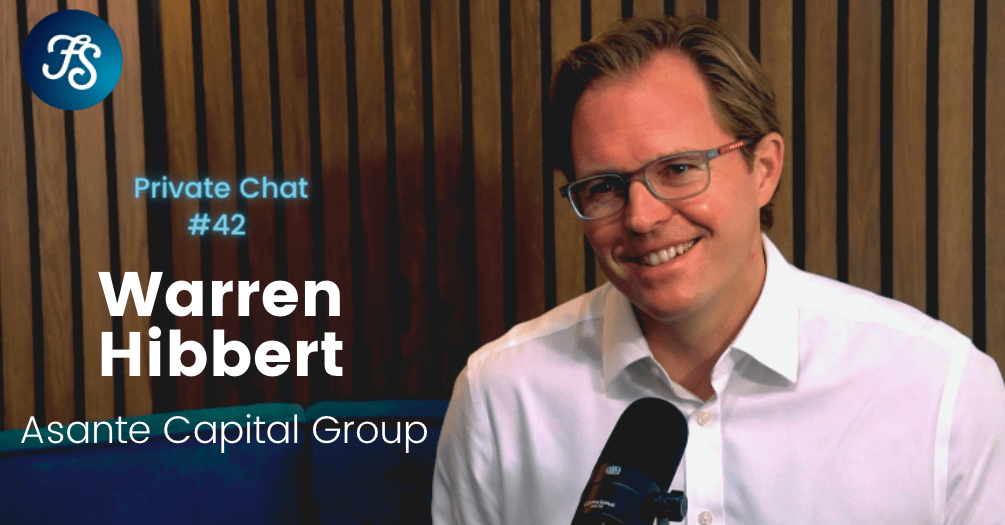Daniel Zwirn, Arena Investors: Avoiding moral hazard in private markets
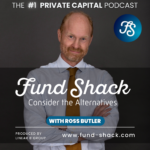
Daniel Zwirn is CEO of Arena Investors LP. In this episode of the Fund Shack private equity podcast, he talks to Ross Butler about the opportunities in private markets, and how to prosecute them in a way that truly aligns incentives with underlying investors.
[00:00:16] Ross Butler: You’re listening to fund Shack. I’m Ross Butler, and today my guest is Daniel Zwern, CEO and CIO of Arena Investors, a global asset manager that seeks out special situations across the world. Daniel has some very alternative perspectives on the opportunities in private markets and how to prosecute them. And so we talk about the moral hazard of fund management, the cyclicality of private market strategies, and the opportunities that arise from regulatory and structural arbitrage.Dan, welcome to Fund Shack. You’re actually quite an unusual guest for fund Shack because arena doesn’t seem to fit in any neat bucket. And maybe that’s the point. Why did you set up Arena? I think it was in 2015. What was the opportunity set that you saw?
[00:01:03] Daniel Zwirn: Well, thanks for having me, and I appreciate being here, as well as the question. I think arena is based on an original business plan I created in 1995. And the point was to create an investment business that was a Warren Buffett style motive franchise, right, where we could effectively be investors first. And in the early mid ninety s, as alternative firms started to get out of the box of being just a PE firm and started to think about building broader based franchises, it was our view that, or my view at the time, that there were two models to do that. One was to become what I referred to as fidelity of alternatives and effectively be a packager of branded beta and bring a long only model to the alternative space, thereby actually effectively making it not terribly alternative. The other way was to look into history and think about the folks who had been really excellent deployers of capital over time and look at the models that they employed in order to do that on a systematic and programmatic basis, such that ultimately we could have the opportunity to create a business that had material intangible value. And so we looked at companies throughout history, or modern capitalist history, certainly starting in the, call it 16 hundreds and onward, although elements of this existed far before that time. [00:02:24] Ross Butler: So you got the history books out in order to set your strategy? Absolutely. [00:02:29] Daniel Zwirn: Well, there’s no extra credit for originality here, so let’s go find the best ideas that have ever been and look at reasons why things like entities like the Rothschilds and other of the european merchant houses flourished over centuries, or the global grain traders and how they’ve built their business over the last 200 years into kind of powerhouses, or the Asian Hongs. Look at Ks Lee’s business, Chung Kong, or the quoks, and how they kind of did what they did. And the answer was, it wasn’t because they chose to or set themselves up to kind of be a better picker of securities. They weren’t relying on superior brain power. They were relying on creating scenarios whereby they had some sort of scarce commodity, cash or otherwise, as they looked at a value chain and such that both people examining a transaction, both buyer and seller, or both borrower and lender, whatever the counterparty relationship might be, could have the exact same view on value. But the other guy needed your scarce resource, and therefore you were going to have to pay a premium. [00:03:34] Ross Butler: So it’s a structural issue they’re looking for. They’re not trying to value things differently and be cleverer. [00:03:39] Daniel Zwirn: Yeah. They are looking to set the table such that the kind of good stuff comes to them. And they are recognizing that the enemy of long term sustainable profits is moral hazard, which has been the primary reason why financial institutions of various sorts have blown themselves up over the centuries. [00:03:57] Ross Butler: Could you explain why moral hazard comes into this? [00:04:00] Daniel Zwirn: Sure. Well, in many instances, whether it’s a hedge fund or a particular type of fund, or an insurance company or a real estate company, et cetera, people aggregate capital with some sort of stovepiped strategy. And the reality is that every single thing that we might look at to which we might apply the label, permutation of industry, product, and geography has its own frequency and wavelength, and it all cycles, and nothing’s ever good all the time.And so, to take the extreme, as Buffett says, when others are fearful, I’m greedy. And when others are greedy, I’m fearful, right. Typically, the best stuff comes by being on the other side of those who were subject to these moral hazard issues.
And so when you look at the kind of folks that I had referred to who have flourished over centuries, they are on the right side of that trade.
[00:04:56] Ross Butler: Yes, but you’re describing 95% or more of the fund management industry. This is how the world works. It’s almost how the human brain works. You have to categorize things in order to kind of just deal with the world. And I can’t put you in a box. How do I deal with you? [00:05:14] Daniel Zwirn: Well, I think first off is the premise that it’s, quote unquote, the fund management industry, right. Because many of the world’s best investors choose not to be a part of the fund management industry for just that reason. Right. And what we wanted to be was fundamentally a great investor, and then think about how to capitalize those great investments. And if you look at the kind of best investors out there, maybe that’s in Europe, that could be over time or recent. [00:05:44] Daniel Zwirn: The Benedettis, right, the Benedettis. Or, you know, Vincent Bolaray doesn’t run funds, he makes money.John Malone in the United States. And obviously, some of the insurance folks, like Warren Buffett or Prem Wattsa, or there’s a business called Markel, it’s in the property and casualty insurance. But they actually do quite a bit of clever investing, or WR Berkeley. None of those people have funds or need to have funds, right? And so, not that there’s anything wrong with funds, if one can create funds that allow you to pursue things that do make sense when they do, and don’t make sense when they don’t, and not to pursue them when they don’t. And so, again, this notion of fidelity, of alternatives, sometimes make people think that that’s just the only way it can be done. And so the ubiquity of that thought, of that thinking, provides opportunity in and of itself. Because if everyone’s going to kind of close their eyes and look left, right, there’s probably going to be a lot of stuff on the right, and we want to be on the right side of that kind of perception or misperception and effectively be a beneficiary of it.
[00:06:59] Ross Butler: Just operationally, that must be quite difficult to execute, because if you’re raising money for investors, everyone wants to add value right through the chain. And in order to add value, you need a balanced portfolio. And in order to do that, they need to know it’s LP funds, for example. They’re a black box already. So we need to have some idea of what you’re going to do. So that must create organizational complexities on the fundraising fund management side. I shouldn’t say fund management, but you know what I mean. [00:07:30] Daniel Zwirn: Yes. I think there are two ways that investors or allocators approach that, where it can make sense in the minority of the circumstances.They are aware of this issue, and they find ways to label it in certain ways that allow them to do the right thing.
[00:07:55] Ross Butler: A linguistic solution to. [00:07:56] Daniel Zwirn: And they start using things that I have done have been referred to as distressed, or mezzanine, or real assets, or all kinds of things. Right.At times, I’ll be put into this notion of multistrategy, but that’s more of a hedge fund notion.
Than a private assets notion. So that’s one way, right, where they get it and they find a way to do it. The other is that over time, people start to use kind of convenient labels and they let a few in under the door, and suddenly there’s this thing called opportunistic, and, well, now I have an opportunistic bucket, so I got to fill it, right. And so that leads to its own unintended consequences, among other things. But that is another way that investors find their way toward these things. But definitely, it’s not obvious to many, which is part of the opportunity. Right. And so you continue to find ways to do things that do make sense and avoid things that don’t. And so we do complement our multistrategy funds with what we refer to as excess capacity vehicles. And so there are times when something we’re already doing makes a ton of sense. We’re doing it already, but we think there’s much more to do, and we’ll sell that capacity in a particular geographic or product area that we think is compelling and that runs directly opposite to the normal fund management industry, which says, I’m going to articulate that XYZ is a great thing to do. If you only give me the money, then I’m going to go do it. Right. And then we’ll see how it goes. Whereas we’re saying, here’s a thing that is good. We are doing it. We’re doing it with or without you. But there’s so much to do. Why don’t you do it with us? And by the way, as soon as it’s not good, and therefore doesn’t qualify on a return per unit of risk basis to access our multistrategy funds, we won’t offer it to you. Right. And that’s a good thing. We’re going to keep you out of trouble. We’re not going to put you up a tree. We’re going to protect you. And then finally, I would say at times with some of our best investors, we become both an investment, an investee, but also kind of a quasi consultant, because we don’t actually come in with our kind of peddling our wares in a given area. We have no biases. Right. And so people can ask us, hey, I’m looking at this area, what do you think of it? And we’ll say, well, as an example, someone asked me about certain parts of the residential mortgage business, and they had a fund offering where the fund manager was touting how spectacularly wonderful it was. And what we said is, well, we’re following it, too. It’s not wonderful. It could be wonderful, and we think it’s coming to be wonderful. But this guy can’t raise his fund such that he can have the money when it becomes wonderful unless he tells you it is wonderful now, whereas we will be there when it is good and won’t be there before it’s good. And we don’t have to say that it’s good when it’s not.
[00:10:50] Ross Butler: Yeah, this is very unusual, I think, because truth telling. Yeah, well, that’s very unusual, but also because the alternatives industry has just done so well over the last decade or two. And it’s like, absolutely. If you were going to look at success stories, the natural place is to look at recent ones like Blackstone. And it’s not like a flash in the pan. This is a great company that’s grown over several decades, hugely successfully, but they’re staying within the bounds of industry norms. Why not just emulate them? It’s kind of a bold thing to do to look back to the 17th century or whatever, but it’s paying off. [00:11:25] Daniel Zwirn: Well, I think certainly if I wanted to invest in Blackstone, I would invest in the company, the stock of Blackstone, because the owners of that stock have been the great beneficiaries of that model.And over the long haul, that’s where their wealth is being accumulated. And so I would want to be aligned with them in doing that. Any one fund don’t know. Right. Because when you offer every type of product, where’s the differentiation? Where’s the edge? Where’s the alpha?
When you’re in a several trillion dollar market with a trillion dollars, it’s hard to be terribly alternative, right? Effectively, not with respect to them specifically, but ultimately you become the market at some point, right. And so that’s still great for shareholders of Blackstone, and I’d probably be a happy one.
What that means in terms of the fund offering, it just gets more and more difficult to kind of deliver edge. But ultimately, maybe that’s not what people want. Maybe they just want branding. Maybe they know institutional protection of careers. Maybe they want to make sure, hey, no one ever went wrong with IBM, right?
But that said, there’s a ton of super commercial, incredibly bright investing people at those places. And by the way, you could have great investors, individuals, investors at those places, just doing the best they can do with $30 billion in a $50 billion market or whatever it is, right. And they’ll give you the best chance of having the least worst.
[00:13:09] Ross Butler: Yeah. So I completely buy the idea of investors. First, no moral hazard, kind of an unconstrained approach, but that carries with it, surely great operational complexity. So you’re global, for example. You’re not huge in terms of assets under management, but you’re global, and you look at all sectors and across the entire capital structure.There’s a virtue sometimes in constraining yourself.
[00:13:37] Daniel Zwirn: Well, I think a very frequent response when we talk about being kind of global and multi strategy. You know, I have this wonderful shipping mezzanine private credit guy in Hamburg, and you can’t possibly be as good as him at shipping mezzanine in Germany or whatever. And our response to that is what you have is a big bunch of moral hazard there, right? Where you have hammers that only see nails. And so it is not coincidental that such a guy would keep saying, well, this is a wonderful thing to do, even when it’s not. And so we respond to that by saying, let’s find a way to get the milk of that domain capability without the cow of the fixed cost infrastructure and the misalignment of interest. And then we do that through the creation of what we refer to as joint ventures. And so in addition to our 160 people with a subset of those in the front office, and among our front office teams, we have north american corporate real estate and structured finance, global credit markets, natural resources secondaries and liquidity solutions, european private investments and Asia Pacific private investments. We have over 50 joint ventures all around the world, and each of those joint ventures has very deep, particular sourcing, analytical or servicing capabilities to which we want variable cost efficient and hyper aligned access.So instead of being in the european shipping mezzanine fund, and you lock up for five or seven years, and that stuff may or may not be good. And then when it’s not good, you start to hear things like it was a bad vintage or 100 year flood or perfect storm or other exposed excuses. You do it when it does make sense and you don’t do it when it doesn’t. And lo and behold, when such a person is investing a good part of their net worth in a ratio set ratio with you, and we’re, of course, making every decision up front, and along the way, we’re husbanding all the cash and all the bank accounts, right? And so we effectively create a sourcing servicing front end for that very particular person or group. Lo and behold, they actually don’t want to do much at all, which is exactly what we want. We want people and partners who never want to do anything until they should be doing something and then when it’s overwhelmingly obvious, that’s exciting. There was an investor, George Soros’s original partner, Jim Rogers, who said something to the effect of that he doesn’t really like to invest. He just likes to look at, find cash sitting in the corner of the room and just kind of sweeping on up. Right. If it doesn’t feel like that, if it feels like you’re pressing, you’re in the wrong thing. And so those partnerships, of which I’ve done over 150 over the last 25 years, mean that we are dealing with hundreds and hundreds of people connected exclusively to our business that have very deep, particular capabilities, such that we are the home team in whatever product or geographic investment area in which we’re involved. At the same time, those are connecting to business units that themselves have a sufficiently wide domain over which they run, like north american real estate as an example, such that there is very little chance that they’re going to have nothing to do, right. So that they’re not going to subject themselves or us to that moral hazard issue.
[00:16:42] Ross Butler: What’s the secret of making those types of partnerships work? [00:16:45] Daniel Zwirn: In a nutshell, being very upfront with our need for alignment of interest and kind of seeing eye to eye. From a commercial perspective, it’s hard to define, but we know it when we see it. We know there are people who have done a thing for 40 years who are intensely, intensely commercial people, almost like it’s almost more that they are artists versus scientists. And we have real appreciation for that. And a lot of the times when these folks try to speak to more conventional asset managers, they say, well, do you have $100 million already? Who have you done it with?Let’s look at your systems. Blah, blah, blah, blah, blah, right? All we want is commercial killers, right? And we will supplement the analytics portion or the mid and back office capabilities or whatever other things they lack, so that we get that isolated, pure commercial capability working, putting its ore in the water with us at the same time. And then the final piece, as you point out, is all the system stuff. So we’ve been working on systems of our own since 2004 and have put several tens of millions of dollars into them. And you’re right, it is complex. And you’re effectively running from a mid and back office perspective, is what a bank should be. And so it’s hundreds, if not thousands of accounts and many jurisdictions and FX hedging and lots of checking things, right. And so we use this notion of servicing to start, right? Which is, again, not a thing. You hear that word, you don’t hear that word a lot in, in the quote unquote asset management business. You hear it much more in real estate and other kind of pure liquid assets or asset companies. You hear it in the securitization markets where I heard it was really with regard to what happened in the early ninety s in the US with the SNL crisis, and when all of those bad real estate loans arose, there were folks who created special servicing capabilities married with investing capabilities.
[00:18:58] Ross Butler: Does servicing mean like workout teams? [00:19:00] Daniel Zwirn: It means everything from checking and onboarding and surveilling all the way through dealing with deep workout. [00:19:08] Ross Butler: Right. [00:19:09] Daniel Zwirn: And so this notion of servicing sitting between the front office and the back office, providing operating leverage to both as well as this, is key, as well as a completely dispassionate second pair of eyes on everything you do, such that your front office or your joint ventures don’t subject you to moral hazard through their Stockholm syndrome is key.And we’ve married that with capabilities that we have in India that I learned along the way in order to kind of create cost efficient scaling of those special servicing capabilities. And so our servicer quester advisors, which was named for the folks in the Roman Republic who were sent out to the provinces to calculate and collect the taxes, is based in Jacksonville, Florida. And Jacksonville is like the current equivalent of what Dallas was in the place with a good tax regime, a good time zone and temporal proximity to a banking implosion. And so non Miami, Florida was a place where many banks failed in the eight crisis. And so there’s an overabundance of great middle and back office bank type capabilities, right. Which we then supplement with our largest office, which is in so, or now Bengaluru. And so that arose from the fact that along with some partners, I created a significant US focused, but mostly India based consumer lending business, AI driven consumer.
[00:20:37] Ross Butler: Lending business as part of arena. [00:20:39] Daniel Zwirn: No, this is a different thing I did before arena was created. I’ve created several kind of financial institution oriented businesses from scratch. And here we had over 500 people, of whom 90% were in India. And so I kind of became accustomed to how you build financial infrastructure linked to a us base that is cost efficient and highly scalable. So when we marry those three things, free flowing, mandate aligned and variable cost efficient sourcing with the people process and it around servicing, you then start to have material edge to which you could refer as the creation of substantial intangible value in a franchise that has kind of repeatable, programmatic, systematic ways of doing things that ultimately investors should value as a company. [00:21:30] Ross Butler: Yeah, I don’t know much about these things, but it sounds to me like. So a traditional private equity firm has much less flexibility in terms of interfacing with the market, but also has much simpler operational compliance, fund admin requirements, whereas you have great flexibility when interfacing with the market. Yes, but it means that you need much greater sophistication in your back office. [00:21:55] Daniel Zwirn: Or running an enterprise.But that’s where the edge comes. And if you look at great allocators or true investors of capital over the last several centuries, they were very mid and back office intensive. We talk about taking process risk versus value risk. So of course, there’s no free lunch. And so if I want to make what otherwise, from a value perspective seems like free money, it means I’m going to have to work harder in the context of the kind of infrastructure I’m going to need in order to handle whatever we’re dealing with.
[00:22:27] Ross Butler: So just in terms of the products, we spend a lot of time on this show talking to people in private credit, increasingly, but mainly private equity and venture capital.This feels to me like a very solid way of prosecuting growth in any kind of relatively well managed economy. It doesn’t feel like a cyclical play. It feels like structurally sound approach to helping businesses.
Would you agree, I mean, would you be opposed to just setting up a strategy for kind of, let’s say, mid market european businesses and in the belief that that’s just an ongoing opportunity, or do you also see that as fundamentally over a long enough time horizon, just a cyclical play?
[00:23:18] Daniel Zwirn: Well, we’ve been in a pretty interesting bubble from late nine until late 21, and that made it feel like it was going to go on forever, which is how bubbles always feel. And certainly in Europe, you’ve had many, many bubbles go back to the South Sea bubble, and so it feels good until it doesn’t. And so what happened was that that bubble was created by some highly irresponsible monetary authority decisions starting in 2012 with QE two. The whole notion of QE itself is debatable with regard to its appropriateness in the marketplace and the ultimate rate risk. [00:23:55] Ross Butler: That has moral hazard. [00:23:58] Daniel Zwirn: Tons of moral hazard there. Tons of it. And so when QE two happened, this greatest ever asset bubble began to inflate, and it inflated and inflated and inflated. And then, lo and behold, starting in 2020, incredibly reckless fiscal policy made its presence known, certainly in the United States, but in many other large markets. And it was briefly kind of masked with the theoretical imperative brought on by the pandemic. And so what you have now is suddenly a world where there’s inflation again. And as you may recall, again, moral hazard. There was supply chain, and it’s just Covid. And people like to make all kinds of excuses when they kind of start doing the wrong things. And the reality was it was grotesquely reckless fiscal policy, inciterating fiat currencies, making it ultimately impossible for monetary authorities to do anything other than raise rates. And so now in the United States, as an example, we have higher debt as a ratio of GDP than we did coming out of World War II, which was the previous kind of asset bubble of all time, effectively by virtue of the fact that most of the world’s major governments borrowed tremendously and then consequently destroyed a lot of the collateral that they created as a result of that borrowing. And so that left them with no choice in the late forty s and nineteen fifty s to do anything other than have a combination of higher inflation and higher rates so that they could decrease the debt they effectively owed. And so now you’re seeing the same thing. And so we have this massive, massive debt built up against this massive amount of assets that were effectively systematically overpriced, both from the perspective of the enterprise, where asset value is paid, but also in the structure and advance rates and overall pricing of the credit that financed it. And so what happens? Well, it’s got to go the other way. Has to, right, mathematically. And so what we saw is starting in late 2020, a rolling series of train wrecks began and again, jawboning away. This is the greatest thing ever. Let me get my next fund raised before I tell you how bad the last one is, et cetera, et cetera. But the reality was that in late 21, we saw growth implode. Growth in venture implode. And why was that first? It was first because in many of those instances, you actually needed cash for the assets to exist, right? Because they were cash burning. And so you had all these wonderful unicorns with their horns and white horses running around needing cash. And suddenly people said, well, at what price? And it created a catalyst for the recognition of the value, or in that case, lack thereof, that has then precipitated the implosion in that space that has only, at best in the bottom of the first inning. And so there were over 3000 kind of venture blow ups or effectively quasi bankruptcies last year, right, in the venture world. People refer to this thing in the United States called the ABC, which is the.Oh my goodness, I forgot what the a is for the benefit of creditors. But the point is that it’s a way of burying a bankruptcy in your backyard and pretending that it didn’t happen. And the venture folks are very good at pretending failures don’t happen.
[00:27:29] Ross Butler: So it’s hard to see in the data then on defaults, presumably. [00:27:33] Daniel Zwirn: Well, there’s nothing frequently to default per se. Right? It just fails. [00:27:39] Ross Butler: Did Silicon Valley banks collapse play into that as well, as part of the same ecosystem? [00:27:43] Daniel Zwirn: I suppose not really. That was misunderstood. They didn’t take a lot of actual venture lending risk. They took gigantic amounts of interest rate risk by owning securities without proper interest rate hedging, which is a whole separate matter that was highly misunderstood by the marketplace. And so ultimately, again, the first area that popped was this area in growth and venture. Then in 2022, a number of large scale allocators realized, wait, my assets are way longer than I thought, and I have to make pension payments or endowment related payments or insurance related payments, and suddenly my assets are way longer. And, oh, XYZ mega fund doesn’t come every two years with a new $20 billion PE fund. And by the way, these things could last 15 years, and there’s not distributing any money. And how do I make my obligations set? [00:28:38] Ross Butler: Actual mismatch. [00:28:39] Daniel Zwirn: Yes. And so what happened there was that some of the smarter version, members of that community started selling early, both because they realized they might have an asset liability match, but also because in all likelihood, they realized that there’s a great lag between when value is diminished in those funds and when it’s actually shown through the NaV statements. And so they hit the bid early and got out like Harvard endowment, in some instances, at least. And it was not coincidental that several of the largest secondaries funds of all time were raised, right. As large scale mega funds raised $20 billion funds to buy at Nav, the interest in the other mega fund, PE funds, right, et cetera, et cetera. And so that mismatch presented itself. And all of these come in the form of either cash needs, asset liability mismatches, or, effectively, maturity walls that force the realization of value, because no one wants to admit that they’ve had a problem unless they’re really confronted with it. Then, a year ago, we had real estate arise, right? And we saw that the sudden move in rates meant that certain banks were exposed. And that was further catalyzed by the fact that we realized for the first time that bank deposits can move with a speed and alacrity that they had never moved before, because through technology, you can change where your deposits are very rapidly. And so, traditionally, banks, when they thought about their liability, set a thing called demand deposits, which is people like you and me that just put their money into the bank were valued more highly than term deposits that have specific lifetimes. On the theory that over time, the average demand deposit was eight years or ten years, and it was cheaper than having term deposits that were more expensive at three and five years. But lo and behold, those deposits certainly turned out to be only there when you don’t need them. And they started to move very suddenly. And that exposed a real asset liability mismatch once again, which in the United States further exposed the fact that in the wake of the GFC, regulators, as regulators do, both over regulated and misregulated the US banking system. And they basically said, you’ve stunk up most of the investments that you’ve made. So now you can only buy securities and do Cre lending. So lo and behold, through effectively moral hazard, they said, okay, I’m going to buy securities, abs and other types of securities, but I’m going to go way longer so I can reach for yield in a non yield environment. Right. [00:31:02] Ross Butler: This is during the 2010s. They’re doing this after the. [00:31:04] Daniel Zwirn: And all the way through, all the way up. Right. So they went longer and longer, more. [00:31:08] Ross Butler: Exposure to commercial real estate going into Covid than historically. [00:31:11] Daniel Zwirn: Well, first they were more exposed to securities and those securities had long duration and they effectively exposed themselves to interest rates more than they had ever been exposed. [00:31:22] Ross Butler: Right. [00:31:22] Daniel Zwirn: And then on CRE lending, they went longer in CRE lending with greater advance rates at cheaper prices, where they were most exposed. And they effectively exposed themselves to that as well. And were the victim of the secular change, such that office basically has vastly less value than everybody ever thought it could. And so they did in fact have a perfect storm. But it wasn’t really their fault because they were told they could only do a couple of things and they did a couple of things. Moral hazard, yet again, was it regulation. [00:31:52] Ross Butler: Or was it regulation by raised eyebrow? Did they have to do it? [00:31:55] Daniel Zwirn: Well, it so happens that I was involved in two bank turnarounds in the wake of the GFC. And we tried within those banks. As an example, when we looked at doing a loan, no matter how low in risk, that had a double digit coupon. It so happened that in those two bank turnarounds, when we tried to do things outside that box, the regulators were violently opposed because of their systematic misconception that the price of a loan, the coupon, effectively the IRR of a loan, is directly correlated with the risk of a loan, which is frequently not the case. Right. And so we said, here’s this low risk but higher return opportunity. Oh my God, no. And then you have to put up more capital against it and it effectively destroys the Roe. So the banks were literally sitting with their boots on the necks of bank operators, forcing them to regulate. Absolutely forcing them into things that made no sense, right. And at the same time, those people had jobs, they had shareholders, they demanded a return on their equity. And so they were caught in a corner and they effectively created the seeds of the next bank implosion, which is now happening particularly in cre.And then next came leverage finance. And so leverage finance evolved post the GFC in a very unique way, which was that there know, just the CLO business, just the direct lending business, just the leveraged lending business, just the PE business. Those all were one thing, unbeknownst to most of the participants among those four areas. Right. And so what happened was that CLO equity was marketed post the GFC by saying, well, all of that CLO equity, pre GFC, that went down to a dime on face, came all the way back. So this stuff is bulletproof. It can never go down. It’s wonderful.
And by the way, it’s clo, it has the word loan in it. Doesn’t really give you the ability to understand that it’s ten times levered, right. Because it’s a loan. What do you mean ten times levered? And it should make ten or 12%. So it’s really, it’s great risk reward when it was effectively terrible risk reward. And by the way, if it was such a great risk reward, why were the CLO managers selling it to other people when they could have had it all to themselves, right? In fact, they were owning virtually none of it. And so off the back of that CLO equity, they were able to raise AAAS that financed the right side of the balance sheet of the clos at incredibly low rates from international insurance companies, in many instances at 30 bips or something along those lines. And that therefore created this gigantic wall of capital available to would be leveraged lenders among the CLO managers who then suddenly were interested in buying loans that were higher leverage, cheaper, badly structured, et cetera. And at the same time as the alternative space boosted the opportunities available for access to capital for private credit managers. Lo and behold, the size of those private credits became competitive with the leveraged lending space. And effectively, it was a race to the bottom on pricing between direct lending and leveraged lending. And then finally, given that massive availability of credit at incredibly low pricing with terrible structures. Lo and behold, the PE firms said, well, instead of buying it eight times, I’m going to buy it twelve times because I got to get my fund deployed right, and my roe is going to be okay anyway because my debt is so cheap. The problem is that intrinsically, the post tax, unlevered free cash flow of the enterprises is what it is. And so at that unlevered yield of eight or eight or 10%, if you buy that into a seven or 8% return and you finance it at six or seven with incredibly high amounts of leverage, when rates change and or even if inflation arises and margins compress, lo and behold, you’re going to lose a lot of money. And so the same thing that is happening as we speak to the cre owners, who effectively thought they were buying when they bought core real estate funds, and they looked at those big cash flow producing assets and said they’re so safe. And they kind of intuited that the word core meant their investment instead of the asset, when in fact, they had incredibly levered real estate equity purchased at a five cap, which left them completely exposed, not only to asset prices, but to rates. They’re now sitting on things that are labeled core, that are worth zero. Right. When you think, well, core, maybe I’ll make 3%, 6%, I’m never going to lose my money, right? Except that it’s gone, right. They don’t know it yet because it hasn’t come through the NaV statements, but it will. And so a similar thing is happening in PE in many instances. And ironically, it’s happening in the same way, which is all of the most attractive areas. Enterprise software, healthcare services, business services, which from an equity owner’s perspective, are fabulous because they have franchise value without the use of capital. Right? So your cash flow conversion is very high. Well, at some point, if you have a wonderful business, but you kind of grotesquely overprice it and you borrow tremendously against it, you can have a great asset or a great enterprise, but you just may not own it for long because your creditors now own it. Right? And so we saw the most bankruptcies in 23 that we had since 2010, and those issues are continuing to escalate.
And then finally, in structured finance, we’ve seen escalated delinquencies throughout the structured finance universe in ABS, and we haven’t seen it translate into pricing, because, for instance, many of the, what they call real money, or conventional financial institutions, insurance companies and others that own that credit don’t have to take the losses mark to market losses into their income statement. They could only put it on their balance sheet as long as they don’t sell. So what are they going to do? Not sell, no matter how bad it is. Right. And so that will be arising soon. And so we have this kind of confluence of circumstances in monetary and fiscal policy that have now led to this bubble and its subsequent popping that we’re in the midst of as we speak. And many have raised the issue of it being a golden age of private credit, et cetera, et Cetera. It kind of is right on. New issue, new things to do. And in fact, the entire marketplace, in my view, has evolved into what I would refer to as a barbell opportunity. Whereas on the one side, on the right side of the barbell, we can go after all the busted opportunities created through the implosion of these various bubbles. And on the left side, with the dust clearing, there are new issue areas as we are pursuing in conventional real estate, mortgages, asset based lending, lower middle market cash flow lending, parts of energy lending, lots of great stuff that were kind of horribly mispriced for a decade during the bubble era that are great things to do fresh on the left side of the bound, on the left side of the barbell. And so most of the folks who are touting this kind of left side opportunity are forgetting to mention that they’re loaded with some of the right side of the barbell opportunity that they had a hand in creating.
[00:38:48] Ross Butler: You paint a more worrying picture than I’d probably pick up from what, reading the general business news. So you outline a number of, like, I think you call them train wrecks. And so we started with venture and growth, and that happened early. And then we went through to, sorry, what was next, the fund space broadly. And so that happened with the secondary began to happen. Okay, right. And then there’s the commercial real estate, which you’re playing into now. So that’s actually happening.The kind of the leveraged finance one that’s slightly more hypothetical, or are you actually seeing this happen now?
[00:39:18] Daniel Zwirn: Well, bankruptcies don’t lie. They’re filing, but you’re getting a lot of amend extend this new term called liability management exercise.A liability management exercise means you failed. Right. The business was mispropperly capitalized and there’s a restructuring going on. But people are trying to use language to kind of paper over failure of various sorts. And CLO obligations have been much more difficult to find, particularly the equity. The credit has more recently tightened in terms of the right side of those balance sheets. And so that ability to refi is hitting the same type of wall that it did with Cre. And people are going through these amend, extend and pretend exercises in order to hide it.
[00:40:01] Ross Butler: Right. And so this goes back to your fund structure. Are you raising money around these opportunities in order to play into them? [00:40:07] Daniel Zwirn: Well, within our multi strategy, we’re going after all of it. Right. All that’s good and waiting on all that’s bad. But we are in fact looking at raising capital for on the right side of the barbell, things like litigation, finance, where there’s a lot more opportunity, it’s uncorrelated or special situation secondaries where there’s a fabulous opportunity. And on the left side of the barbell, things like commercial mortgage lending and asset based lending, where again, it was really unappealing for many, many years, and now it’s back around and quite compelling. And we’re doing all of those things in the multi strategy anyway. [00:40:41] Ross Butler: So I used to think that special situations was like a euphemism for distressed turnaround investment. But the way you explain things, it just does sound like special situations. Let me give you an armchair analog kind of hypothesis, and it might be completely wrong, but sure. My view of the world of the last ten or even 20 years is that it’s been remarkably benign in terms of a trading environment for many companies. And when I was growing up in the felt like if a company was badly managed, then when the economy went into a downturn, that became perhaps an opportunity for a turnaround investor.But we’ve seen during that, say, 20 year period, much less of that. And I think it’s probably, it speaks to what you were saying about all the intervention. We live in a more kind of intervening global economy and regulators are more regulation, and everyone’s trying to clamp down on everything and let’s say socialize the cost of bad management, whether it’s state bad, you know, economic bad management or company bad management, spread it all out and make sure that things just kind of rumble on and on, right. And it’s kind of in my mind I’ve got this image of you’re trying to squeeze a balloon, the regulator is trying to squeeze a balloon, but eventually opportunity pops out because you can’t keep it in. And so from your perspective, let’s say the opportunity set, perhaps maybe 30 or 40 years ago, might have been selecting a region and looking for badly managed companies within it. But now it’s kind of, you can do it in a more macro way because the problems and the stresses are a result of something more macro like regulatory arbitrage.
[00:42:22] Daniel Zwirn: Yes. [00:42:22] Ross Butler: So that’s how a relatively kind of, I don’t know, mid markety type operation is able to prosecute a genuinely global strategy. Is that a reasonable kind of. [00:42:32] Daniel Zwirn: Yeah.The asset management industry loves using labels in order to kind of make the sale easier. Right. Distress isn’t an asset class, it’s kind of a state of being. And so it can happen everywhere for all kinds of reasons. And so we like that. And so it doesn’t mean the underlying enterprise or asset is flawed, it just may mean the capitalization of it is right. And so that happens everywhere in every way with regard to the environment. Certainly in the US, one of our greatest presidents, Ronald Reagan, once said that some of the scariest words he’d ever heard were, I’m from the government and I’m here to help.
There’s no economy and no private market situation that governments can’t ruin. And certainly we saw it in the UK in the early seventy s, which was an economic disaster wrought by kind of leftist policies that have shown their flaws in 100% of the time that they times that they’ve been implemented since they were created as a notion, starting with the late 18 hundreds. And so those circumstances gave rise to the availability or to the market’s openness. To have someone like Margaret Thatcher come and start to kind of clean up the mess, typically there has to be an implosion wrought by the socialists before somebody of kind of liberal economic thinking is permitted to kind of gain traction. And we saw that here. You guys jumped the gun a little bit. You hired someone, a prime minister and a chancellor, who kind of committed the sin of telling the truth, and we’re quickly bounced from office. Right.
And so these policies create opportunity.
Bad government policy creates more and more and more opportunity.
And so we think there’s an incredible opportunity arising here because of this terrible combination of monetary and fiscal policy that was pursued for in the former case since 2012 and in the latter case since 2020.
[00:44:33] Ross Butler: The other thing I noticed from looking at your website and some of your investments is distressed investors, which isn’t the right term, obviously, but we used to call them vulture funds in this country. They have a bad reputation, or not a bad reputation, but you know what I mean. It’s like potentially the unsavory side of things. And I was looking at your investments and I felt like there was greater social utility in a lot of what you’ve done. [00:44:57] Daniel Zwirn: Absolutely. [00:44:57] Ross Butler: Than the average kind of mainstream vanilla private equity thing. And it’s like you’re rescuing things and some of them are, like, good in every way, like rehab centers and so on. But sometimes they’re just hotel chains that have been struck by Covid or whatever, and you’re going in. And for me, there’s huge social utility in that. But it’s so easy if you use these narrow category bands to think, oh, well, they’re the guys that go in when everything goes wrong, you know what I mean? Seems so unfair. [00:45:23] Daniel Zwirn: Well, you would think that the appropriate rationalization of an economy’s assets ultimately minimizes the cost of capital for that economy, the more straightforward that process is. And so, of course, that’s the, you know, Europe specifically, as an example, has a long history of kind of demonizing opportunistic capitalists. And so that is incredibly. [00:45:48] Ross Butler: And so, like ESG, for example, is huge. And that’s. ESG is another area where you might get a kind of an arbitrage, because regulatory arbitrage is very clear, right? There are rules, yes, but ESG, it’s much less clear, but it still creates mindset sets and kind of swim lanes, which in certain types of assets just become off limits, not necessarily because they’re bad, but because people think other people might think they might be bad. And so suddenly that must create opportunities as well for a flexible investor, I guess. [00:46:20] Daniel Zwirn: Well, I think things like that, I’m a member of certain and have been a member of investment endowments, and when ideas of those type arise, my question is always, well, how much return are we willing to sacrifice? People gave us money to endow this institution. How much of their money and the return we would have gotten on it, are we willing to sacrifice to express our social views through their money? And suddenly the answer is so, you know, I think the issue is, where do you start as an enterprise, from our perspective, whether there’s ESG or not ESG, there are things we will do and things we won’t do, no matter who’s telling us whether that’s good or bad or the other, because we’ve thought through what is kind of decent and virtuous and things that we feel comfortable knowing. The world knows that we’re doing and those that don’t. And there are things that we avoid that no one’s told us not to, that we do anyway. And there are things that we’re going to do that actually do make sense, no matter what they say, because they do make sense, right? And so that means that we’re never going to be involved in things like greenwashing, because we never had to think that way.And the reality is, in the case of energy is do we want to deal with climate deniers? No. Do we want to deal with polluters? No. Do we want to deal with people who are destroying their communities? No. Do we recognize that energy transition is a 40 year reality, not a four month or a four year reality. Do we want these quote unquote dirty areas to be cleaner?
Absolutely. And so our views on those things don’t change, don’t have to change. And so therefore we’re not running toward it and then running away from it and then running toward it again. Right. And just like you saw here in Europe where it know, we’re all about ESG, and then suddenly people were faced with a possibility of a cold winter without russian energy and they’re like, oh my God, forget it, let me just get my coal right. And so we’re consistent in how we do things because we thought beforehand about who we’re going to be and how we’re going to operate. And we stay with that because it makes sense.
[00:48:30] Ross Butler: And it sounds like you don’t borrow your sense of morality from kind of the industry norm, which is, I think the problem with ESG, to be honest with you. [00:48:36] Daniel Zwirn: Well, and of course that goes to the entire notion of being a seller of branded beta. Right. And so much of the alternative space is in the marketing business, not the investment business. And so if you’re in the marketing business, you do what sells. [00:48:51] Ross Butler: So I get the impression that you’d rather be seen as like one of the grand high finance merchant banks of the future than, I don’t know about. [00:49:00] Daniel Zwirn: Grand, but certainly merchant capitalists. Absolutely. [00:49:02] Ross Butler: So what’s your ambition for arena investors over the medium or long term? What’s your vision? [00:49:08] Daniel Zwirn: Well, I think it is to be a true kind of merchant capitalist and continue to provide our stakeholders and our investors a kind of unending stream of that which does make sense and keeping them out of trouble without having to make x post excuses with regard to having allowed this machine that we created to permit those folks to negotiate the shoals that you typically find when you’re kind of getting through cycles in the economy. And so there’s an opportunity to be a true kind of merchant house. And frankly, at times we have found that we have an excess of intellectual property. And so some of these things we actually provide for third parties in very difficult circumstances of workouts or operational improvements.We do that for ourselves, but we also do it for third parties.
[00:50:03] Ross Butler: And what do you like to deal with as people? What’s your culture. Like if I’m a counterparty to you. [00:50:09] Daniel Zwirn: I think we’re pretty pleasant. I would say certainly that in our world there has tended to be a preponderance of folks who have grown up in the kind of Rockham Sockham commercial mortgage or mortgage sell side world generally, that views every relationship as a counterparty relationship.We, given 150 joint venture partners over 25 years, do like to have long term relationships with our partners. But I think we’re clear about who our partners are versus who our counterparties are.
And we talk about being what we call tough but fair. And so when we do have disagreements, we always start with, here’s the right thing. Let’s just do the right thing. It is unfortunate that in many instances we actually find Burton Malkiel and the efficient market notwithstanding that very much people will trade off their greed for their ego and not do things that would actually make them richer if they only just kind of focused on the money.
[00:51:19] Ross Butler: There’s a psychological aspect to what you do, I think. [00:51:22] Daniel Zwirn: Quite a bit. Quite a bit. Yes. [00:51:24] Ross Butler: Yeah. Brilliant. Well, look, it’s been fascinating speaking with you. Thanks very much for sharing your views on the world, and best of luck with what lies ahead. [00:51:32] Daniel Zwirn: You’re welcome. Thanks again for having me. I enjoyed it.